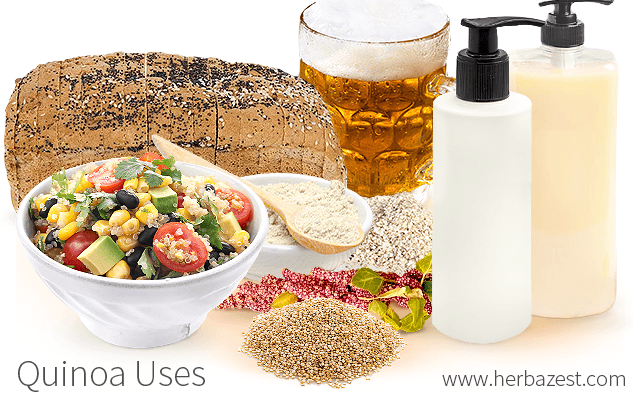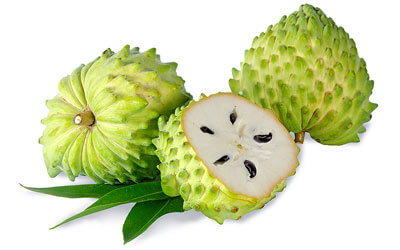Quinoa has been cultivated in the Andean region of South America for over 7,000 years.1 The Incas believed that quinoa was a gift from their gods and referred to it as the mother grain. It had many different uses, from medicine to food. But what is quinoa good for today?
Most Common Uses of Quinoa
The most common uses of quinoa are culinary. Quinoa is often used in side dishes as a replacement for rice or as an addition to salads. It can be consumed raw, floured, flaked, or popped. The many ways quinoa can be consumed as food has led to a wide variety of traditional and non-traditional recipes.
Because of its excellent nutrition and potential as a gluten-free replacement for many grains, quinoa is good for breakfast cereals, oatmeal, cookies, pasta, and more. The wheat contained in most baking products can be replaced with quinoa flour.
QUINOA CAN PARTIALLY REPLACE WHEAT FLOUR, UP TO 50% IN PASTRIES AND 20% IN BREAD.
Less Common Uses of Quinoa
Quinoa is sometimes used as a game-cover crop since it is not susceptible to cereal diseases. Cover crops are important because they help to restore soil nitrogen levels, improve aggregate stability, and suppress crop diseases and pests.
Typically, humans only eat quinoa seeds. However, less commonly, other parts of the plant are also consumed, including the tender leaves and panicles. Aside from human consumption, the whole plant can be used as green forage, as an ingredient for pellets, and as fodder for cattle, sheep, pigs, horses, or poultry.
Another less common use of quinoa is to make beer. Quinoa seeds have a long history of being fermented for alcohol, but more recently, they have been malted as an additive for beer, and the saponins of quinoa can serve as an alternative to hops.
ORGANIC QUINOA BEERS ARE GETTING MUCH INTEREST AS THEY HAVE THE ADVANTAGE OF BEING GLUTEN-FREE.
Additionally, there is much potential in the use of quinoa's saponins in the pharmaceutical industry. They have been shown to trigger changes in the permeability of intestines. In that way, they may be useful for improving the absorption of certain medications. In addition, saponins can be used as antibiotics and to control the growth of fungi.
There is also great interest in the use of quinoa saponins in the insecticide industry as a natural method of managing pests. Depending on the organism, quinoa's saponins have differing levels of toxicity. In Bolivia, they have been successfully used as a bioinsecticide, while in the Philippines, a product containing quinoa's saponins has exhibited ovicidal effects on young insect egg masses.
Moreover, there are many possible uses for quinoa starch as a result of its stability in freeze-thaw conditions and retro-gradation, which make it a potential alternative to chemically-modified starch. It has also been suggested that quinoa's starch could be used in aerosol production, pulps, self-copy paper, dessert foods, powders, and plastic excipients.
Lastly, an extract from quinoa's flowers and leaves is often used in the cosmetic industry in shampoos and conditioners.
It is clear that quinoa can be used in various ways across many different industries. Not only is quinoa good for eating, but it can also be used for cosmetics and animal feed, and it also holds great potential for bioinsecticides and advancements in medicine.
Sources
- Agricultura Tropica et Subtropica, An Andean Ancient Crop, Chenopodium quinoa Willd: A Review, 2014
- Crop Protection, Efficacy of quinoa (Chenopodium quinoa) saponins against golden apple snail (Pomacea canaliculata) in the Philippines under laboratory conditions, 2008
- Encyclopaedia of Brewing, Quinoa
- Food Reviews International, The Worldwide Potential for Quinoa (Chenopodium quinoa Willd.), 2003
- Journal of Cereal Science, Agronomical and nutritional evaluation of quinoa seeds (Chenopodium quinoa Willd.) as an ingredient in bread formulations, 2012
- Journal of Nutrition and Food Sciences, Quinoa (Chenopodium quinoa Willd), from Nutritional Value to Potential Health Benefits: An Integrative Review, 2016
- The Environmental Working Group, CHENOPODIUM QUINOA (QUINOA) EXTRACT | Creating Harmony Quinoa Solid Hair Conditioner
Footnotes:
- Frontiers in Plant Science. (2016). The Global Expansion of Quinoa: Brenda and Limits. Retrieved October 4, 2021 from https://www.frontiersin.org/articles/10.3389/fpls.2016.00622/full




